The Ultimate Guide to Bar Promotions: Boost Sales with Happy Hours, Loyalty Programs, and More
Running successful promotions is one of the most effective ways to boost bar sales and build a loyal customer base. From happy hours that attract crowds during slow times to loyalty programs that keep patrons coming back, promotions create excitement and provide customers with great value. But to stand out in a competitive market, it’s important to use a mix of creative and well-executed promotional strategies that appeal to your audience.
In this guide, you’ll learn:
- How to use happy hour strategies to drive sales.
- The best ways to leverage seasonal promotions and special events.
- How to implement loyalty programs that keep customers coming back.
Let’s dive into the ultimate guide to bar promotions and explore how you can use these strategies to increase foot traffic and build lasting relationships with your customers.
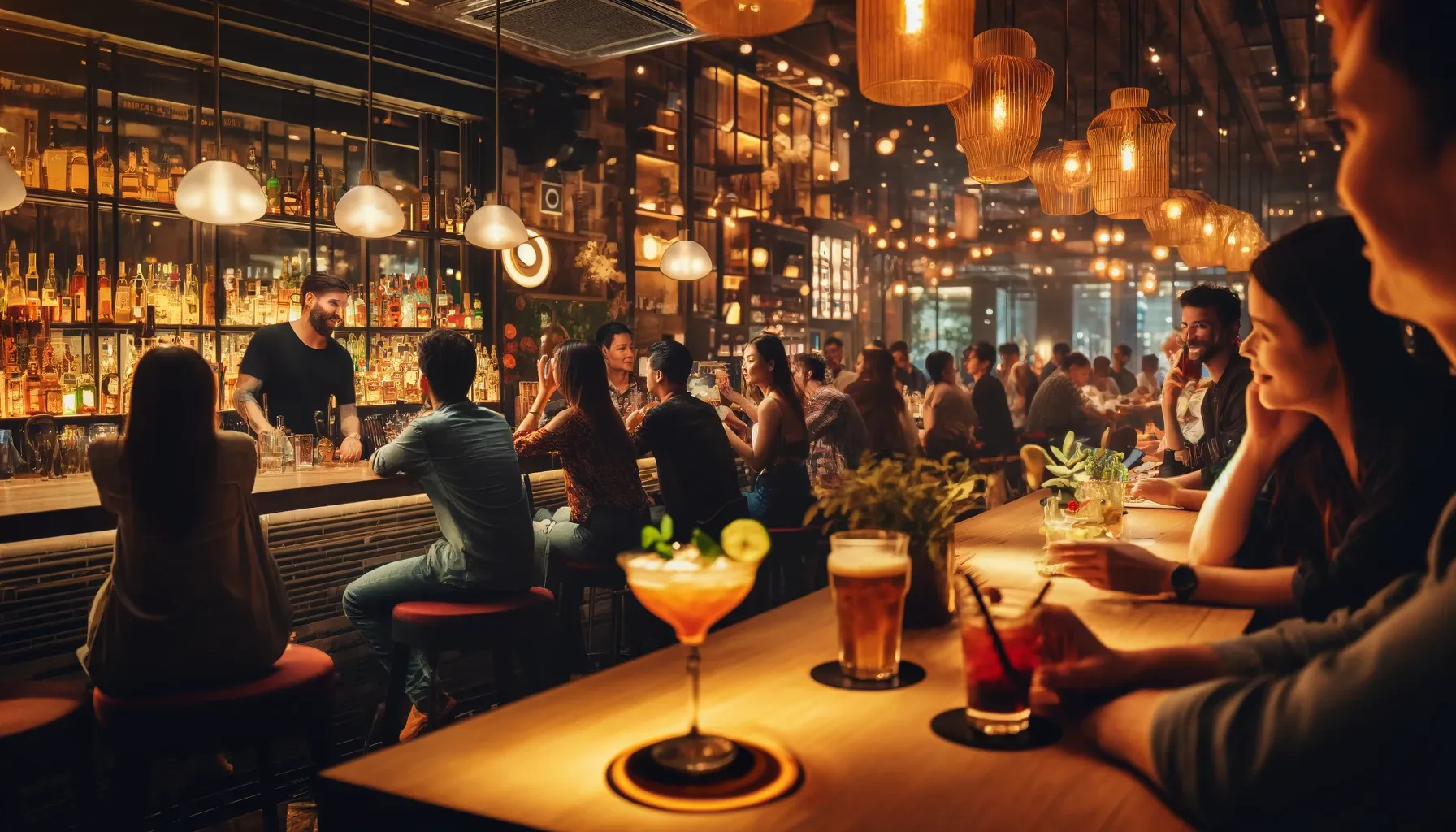
Happy Hour Strategies
Happy hours are a staple in the bar industry, offering a great way to attract customers during slower periods and increase sales. But to make the most of happy hour, you need a strategy that goes beyond simply offering discounts. Timing, specials, and creating a memorable experience all play a crucial role in drawing a crowd and keeping them coming back.
1. Timing is Key
Choosing the right time for your happy hour is critical. You want to schedule it during slower hours when foot traffic is typically lower but close enough to peak times to keep customers around afterward.
- Late Afternoon/Evening: The most common time for happy hours is between 4 PM and 7 PM, catching customers on their way home from work.
- Midday Specials: If you cater to a lunch crowd, consider offering a midday happy hour that pairs drinks with light snacks or lunch specials.
- Weekend Happy Hours: While weekdays are typical for happy hours, offering weekend specials can be a game changer if your bar sees steady traffic during weekends.
- Pro Tip: Analyze your busiest and slowest times to find the optimal slot for your happy hour and fill gaps in foot traffic.
2. Offering Discounts and Specials
Happy hours are all about offering great value, but you don’t have to limit yourself to discounting drinks. Get creative with your specials to keep customers interested and encourage them to stay longer.
- Discounted Drinks: Offer discounts on popular beverages like draft beers, house wines, and well cocktails. You can also introduce happy hour-specific cocktails that are cheaper but still unique.
- Food and Drink Combos: Create deals that pair drinks with small plates or appetizers. For example, offer a beer and burger combo at a discounted price to increase food sales alongside drinks.
- Rotating Specials: To keep happy hour fresh, rotate your specials weekly or monthly. For instance, highlight different cocktails, beers, or small bites to give customers a reason to return and try something new.
- Pro Tip: Use seasonal ingredients to create limited-time drinks that reflect the time of year, such as fruity cocktails in the summer or spiced drinks in the winter.
3. Creating a Happy Hour Experience
Happy hours are about more than just discounts—they’re an opportunity to create a fun and inviting atmosphere that encourages socializing and keeps customers coming back.
- Themed Happy Hours: Introduce themed happy hours, such as ‘80s nights, Tiki Tuesday, or craft beer tastings. These themes give customers something to look forward to and help set your bar apart.
- Live Entertainment: Incorporate live music, trivia, or games into your happy hour to enhance the experience. Hosting trivia or karaoke encourages groups to stay longer, order more drinks, and engage with your bar.
- Social Media Tie-Ins: Promote your happy hour on social media with enticing images of your drink specials. Use stories, countdowns, and exclusive discounts for followers to build excitement and drive traffic.
- Pro Tip: Use a signature happy hour cocktail that can only be ordered during this time to create exclusivity and make your happy hour stand out.
Happy hours, when done right, can significantly boost sales during slower times and create a buzz around your bar. By carefully choosing your timing, offering compelling specials, and creating a fun atmosphere, you can turn happy hour into a must-attend event that customers look forward to.
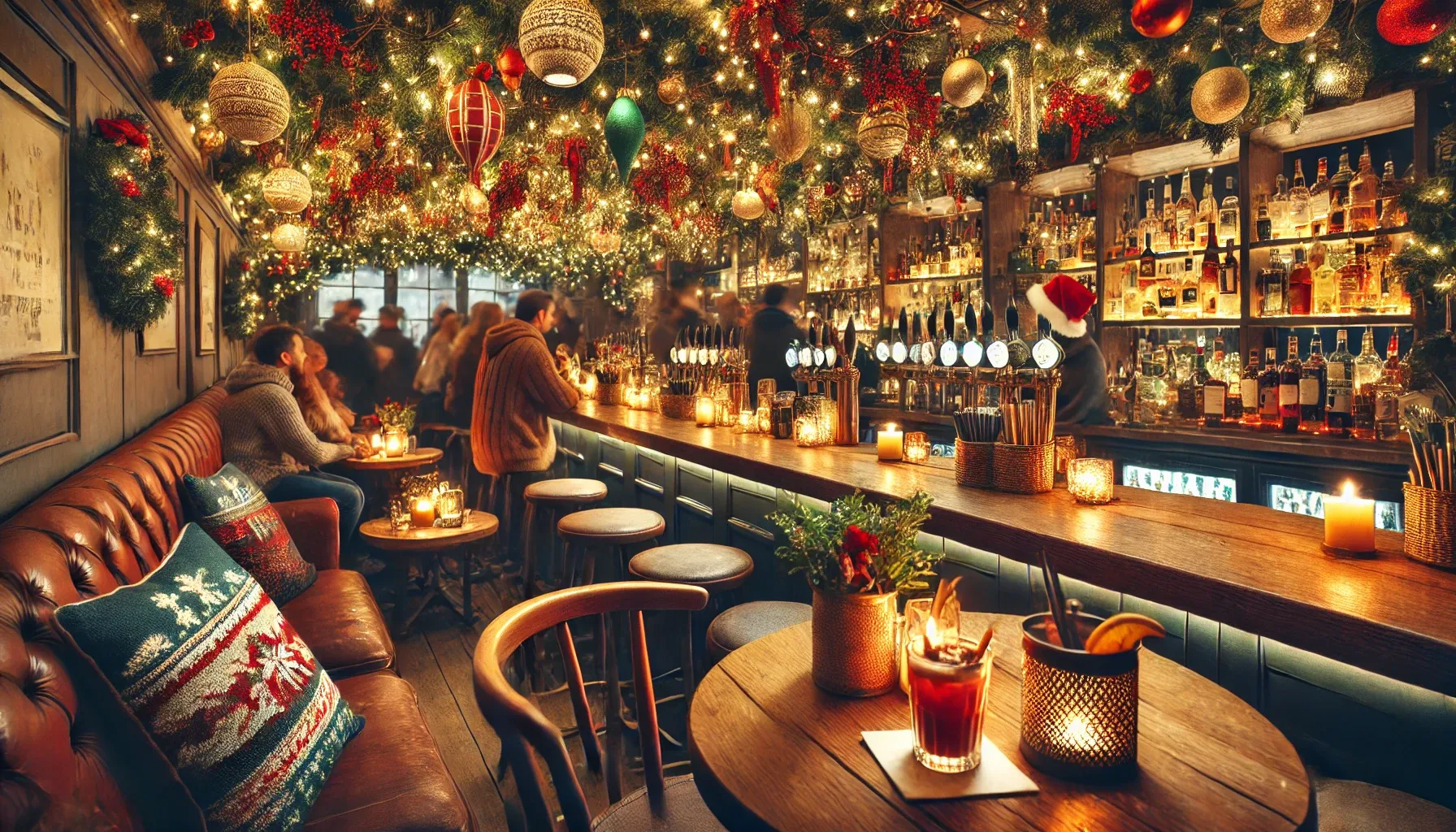
Seasonal Promotions
Seasonal promotions are a great way to attract customers by capitalizing on holidays, weather changes, and popular events throughout the year. By aligning your bar’s promotions with seasonal themes and major happenings, you can keep your offerings fresh and timely, giving customers a reason to visit your bar all year long.
1. Holiday Promotions
Holidays are an excellent opportunity to get creative with your promotions and draw in customers who are looking for a fun way to celebrate.
- Christmas and New Year's Eve: Host themed events with festive cocktails, holiday decor, and music. Offer pre-sale tickets for New Year's Eve parties or special holiday meals with drink pairings.
- Valentine's Day: Offer romantic specials for couples, such as two-for-one cocktails or a prix fixe menu with wine pairings. Alternatively, host an “anti-Valentine’s Day” party to attract singles and groups of friends.
- Halloween: Create a spooky atmosphere with themed cocktails, costume contests, and prizes. Offer discounted tickets or special deals for those who come in costume.
- Pro Tip: Promote your holiday events well in advance on social media and through email marketing to build excitement and ensure a packed house.
2. Sports Event Promotions
Sporting events provide an opportunity to attract large groups of fans, especially during major tournaments or championships.
- Super Bowl or March Madness: Offer game-day specials like discounted pitchers, beer buckets, or appetizers. Create a lively atmosphere with decorations, raffles, and contests tied to the game.
- World Cup or Olympics: Capitalize on international events by offering country-themed drinks or food based on the teams playing. You can also run promotions for fans wearing their team’s jerseys or colors.
- Local Sports Events: If your city has a local sports team, offer specials during their games and broadcast them at the bar. You can also partner with local sports organizations to offer exclusive deals for fans or ticket holders.
- Pro Tip: Run social media campaigns leading up to major sporting events, asking customers to vote on game-day specials or share their team allegiance for a chance to win free drinks.
3. Weather-Based Promotions
Playing off the weather is a clever way to attract customers, especially during extreme conditions when people are looking for an excuse to get out—or stay inside.
- Summer Heatwaves: Offer cold drink specials like discounted frozen cocktails or ice-cold beer buckets. Run a promotion where customers get a free drink if the temperature reaches a certain high.
- Winter Warmers: During the colder months, promote hot drinks like spiked hot chocolate, mulled wine, or Irish coffee. Create a cozy atmosphere with seasonal decor and offer discounts on comfort foods like soups and stews.
- Rainy Days: Introduce “Rainy Day Deals” where customers get a discount on their bill or a free appetizer whenever it rains. This can help draw in people who would otherwise stay home.
- Pro Tip: Use your social media platforms and email list to notify customers of weather-based deals as soon as the forecast looks promising.
4. Seasonal Themes and Limited-Time Menus
Introducing limited-time seasonal menus can help attract repeat customers who want to try something new and exclusive.
- Fall Themes: Create a fall-themed menu featuring pumpkin-flavored drinks, warm cocktails, and hearty comfort foods. Host events like pumpkin carving contests or Oktoberfest celebrations to draw crowds.
- Spring/Summer Themes: During spring and summer, offer fresh, fruity cocktails, salads, and light appetizers. Host rooftop parties, patio events, or outdoor BBQs to take advantage of the nice weather.
- Seasonal Ingredients: Incorporate seasonal, locally-sourced ingredients into your menu. Promote these limited-time offerings to emphasize freshness and exclusivity.
- Pro Tip: Highlight your seasonal offerings with vibrant, eye-catching visuals on social media, and encourage customers to share their experience with a specific event hashtag.
Seasonal promotions keep your bar’s offerings exciting and relevant throughout the year. Whether it’s leveraging holidays, major sports events, or the changing weather, these promotions can attract new customers and keep regulars coming back for more. Be sure to plan and market these events in advance to maximize attendance and create a memorable experience for your patrons.
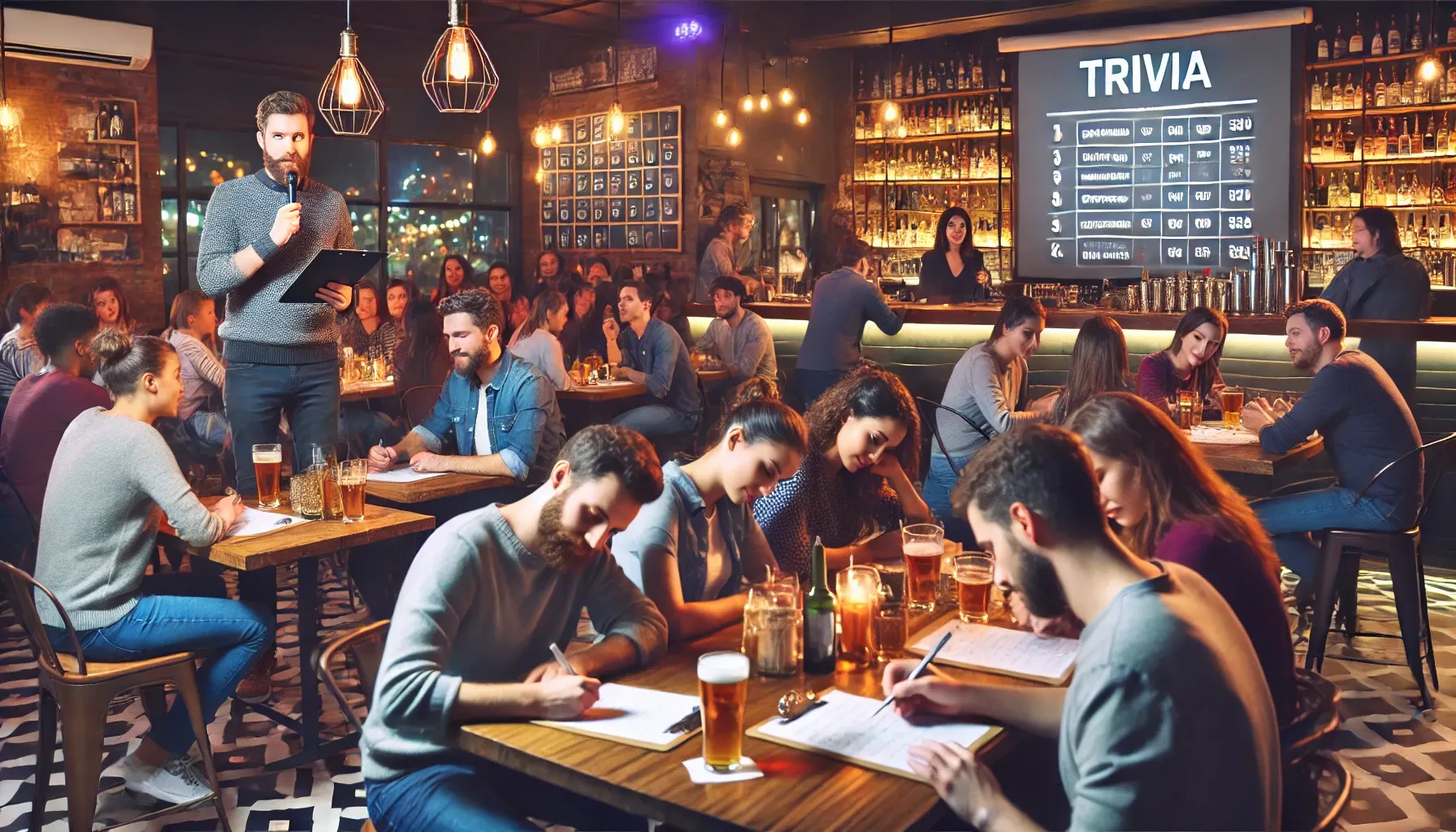
Loyalty Programs
A well-designed loyalty program is one of the most effective ways to keep your customers coming back for more. By rewarding patrons for their repeat visits, loyalty programs create a sense of value and appreciation, turning casual customers into regulars. These programs also give you valuable insights into customer behavior, allowing you to refine your promotions and better serve your audience.
1. Types of Loyalty Programs
There are several types of loyalty programs that can fit your bar’s unique needs, and choosing the right one depends on the type of engagement you want to encourage.
- Stamp Cards: One of the simplest and most familiar formats, stamp cards reward customers with a free drink or discount after a certain number of purchases. For example, “Buy 10 drinks, get the 11th free.”
- Points-Based Systems: Customers earn points for every dollar they spend, which can be redeemed for rewards like free drinks, exclusive deals, or event tickets. Points-based systems can be more flexible and appealing, as customers feel like they’re making progress with every purchase.
- App-Based Programs: Many bars now use loyalty apps that allow customers to earn rewards digitally. Apps can send push notifications about special offers, keep track of customer visits, and provide personalized promotions.
- Exclusive Membership Programs: Offer a VIP membership program with a monthly or annual fee in exchange for exclusive perks like free drinks, priority seating, or special event invitations. This option works well for bars that cater to a high-end or loyal customer base.
- Pro Tip: When selecting a loyalty program, choose one that’s easy for your customers to understand and use. If it feels complicated, they’re less likely to participate.
2. Implementing a Loyalty Program
Once you’ve chosen the right type of loyalty program for your bar, it’s important to implement it in a way that’s engaging and easy to manage.
- Easy Enrollment: Make it simple for customers to join the program, whether through a sign-up at the bar, on your website, or through an app. Offer an incentive, such as a free drink or appetizer for signing up, to encourage participation.
- Track Progress: Use POS systems that can track loyalty points or visits, allowing customers to easily redeem their rewards. If you’re using an app-based program, the tracking will be done automatically, streamlining the process.
- Promote the Program: Make sure your customers know about the loyalty program by promoting it on your menus, table tents, social media, and through email newsletters. Train your staff to mention the program to customers when they check out or order a drink.
- Pro Tip: Keep the rewards fresh by rotating them periodically. For example, introduce seasonal rewards or partner with local businesses to offer unique perks beyond the standard free drink.
3. Building Customer Loyalty
To maximize the effectiveness of your loyalty program, focus on creating meaningful connections with your regulars. Personalization is key—customers are more likely to stay loyal if they feel like the rewards and promotions are tailored to their preferences.
- Personalized Offers: Use customer data from your loyalty program to send personalized offers based on their past orders or visits. For example, offer a free drink on their birthday, or a discount on their favorite cocktail.
- Exclusive Events for Loyalty Members: Host members-only events, such as tastings, meet-the-brewer nights, or live music performances. This not only rewards your regulars but also makes them feel like they’re part of an exclusive community.
- Surprise and Delight: Occasionally reward loyal customers with surprise perks, such as a free appetizer or early access to event tickets. These unexpected rewards can make customers feel appreciated and encourage repeat visits.
- Pro Tip: Use social media to highlight your loyalty members. Feature a “Customer of the Month” or share stories about your regulars to create a personal connection with your broader audience.
A well-implemented loyalty program can be a game-changer for your bar, driving repeat business and creating a community of regulars who feel valued. By choosing the right type of program, promoting it effectively, and personalizing the experience, you’ll keep customers coming back and build long-term relationships that benefit your business.
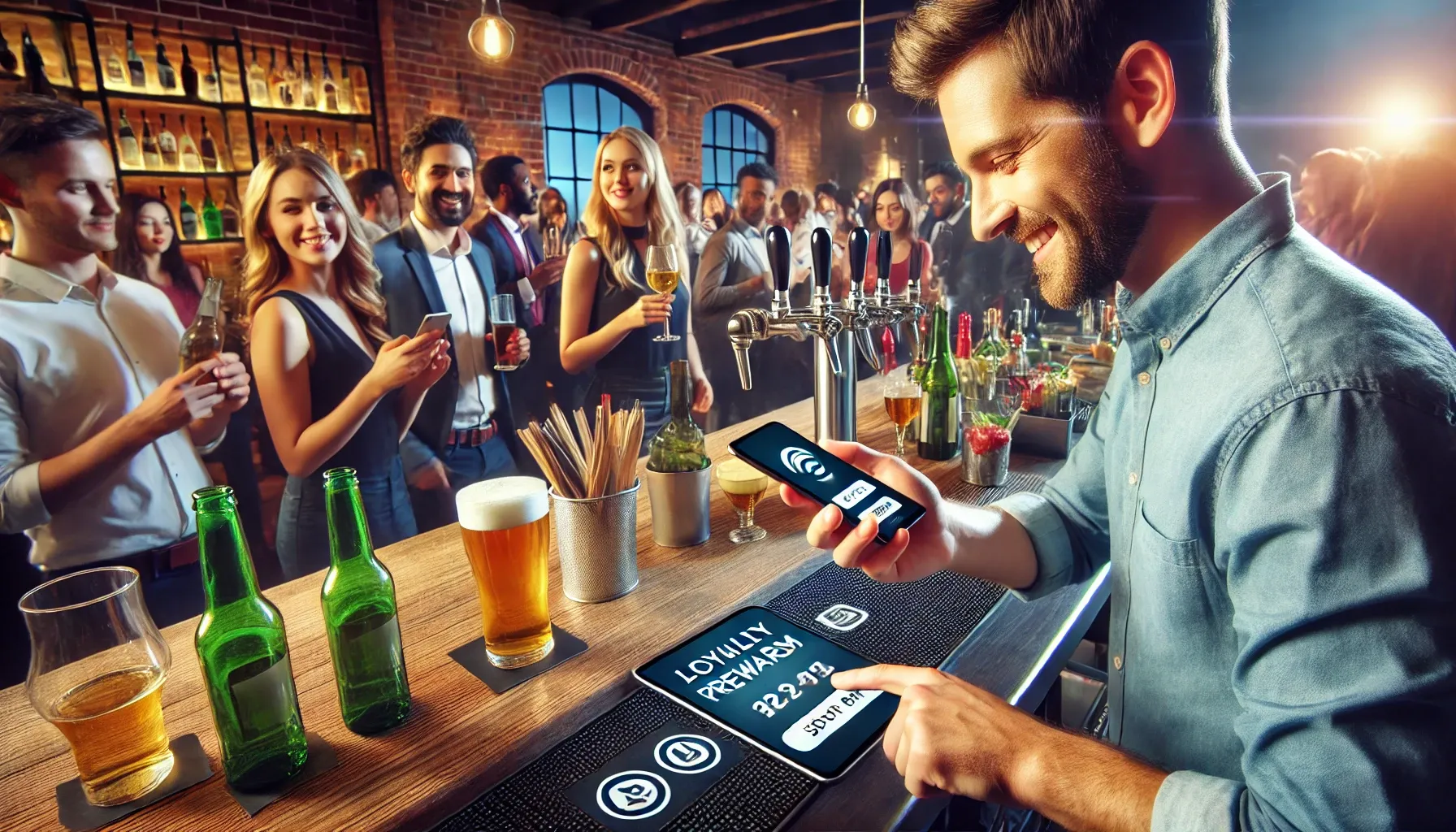
Bundle Offers
Bundle offers are a simple yet effective way to increase average spend per customer and make your bar’s menu more enticing. By pairing food and drinks together at a discounted rate, you can encourage patrons to order more than they might otherwise, while also introducing them to new items on your menu. Bundle offers create value for customers while boosting sales for your bar.
1. Food and Drink Combos
One of the most popular types of bundle offers is pairing food with drinks. By creating attractive, reasonably priced combos, you can encourage customers to try new items or enjoy a more complete meal at your bar.
- Classic Pairings: Offer popular combos like a burger and a beer, wings and a pint, or a cocktail with an appetizer. Customers appreciate the convenience and value of getting both food and drink in one package.
- Creative Combos: Get creative with your bundles by offering unique pairings that highlight signature items from your menu. For example, pair a craft beer flight with a charcuterie board or a signature cocktail with a gourmet slider.
- Menu Discovery: Use bundle offers to introduce customers to items they may not usually order. For instance, if you’re launching a new cocktail or beer, pair it with a well-loved menu item to encourage customers to try it.
- Pro Tip: Promote your combos as limited-time offers to create a sense of urgency and boost sales.
2. Event-Specific Bundles
Bundle offers work especially well during events, such as trivia nights, sports viewings, or themed parties. By creating event-specific deals, you can tie your menu offerings into the event and encourage customers to stay longer and order more.
- Trivia Night Combos: Offer discounted combos that include a drink and an appetizer for trivia participants. These easy-to-eat options can keep customers happy and engaged throughout the event.
- Game Day Bundles: During big sporting events, offer deals like beer buckets or pitcher-and-pizza combos to cater to large groups. These bundles encourage group ordering, which can significantly increase your average check size.
- Holiday-Themed Bundles: For holidays like St. Patrick’s Day, Cinco de Mayo, or Halloween, create themed bundles that reflect the spirit of the event. Pairing holiday-specific drinks with festive food options can make your promotions more appealing.
- Pro Tip: Create exclusive bundles for event attendees and offer special pricing to customers who RSVP in advance.
3. Upselling Through Bundles
Bundle offers give your staff the perfect opportunity to upsell and increase check size. Customers are often more willing to spend extra when they feel like they’re getting more value for their money, making bundle deals an effective upselling tool.
- Premium Upgrades: Offer customers the option to upgrade their bundle for a small additional charge. For example, allow them to swap a standard beer for a craft beer, or upgrade a small plate to a full-sized meal for a slightly higher price.
- Add-On Deals: Create add-on deals where customers can get a discount on a dessert, appetizer, or an extra drink if they purchase a bundle. This not only encourages customers to spend more but also helps clear out inventory by highlighting less-ordered items.
- Pro Tip: Train your staff to suggest bundle upgrades or add-ons during busy times, as customers may be more willing to say yes when they’re in the mood to celebrate or relax.
4. Promoting Your Bundle Offers
To get the most out of your bundle deals, you need to promote them effectively across multiple channels. In-bar marketing, social media, and email campaigns can help you reach a wider audience and generate excitement around your bundles.
- In-Bar Promotions: Use table tents, posters, and chalkboards to advertise your bundle deals throughout the bar. Make sure they’re prominently displayed in areas where customers make ordering decisions, like at the bar or near the menu.
- Social Media and Email: Promote your bundle deals on social media with mouth-watering images and videos of the combos. In email newsletters, highlight bundle offers as a special promotion, especially during events or holidays.
- Staff Promotion: Encourage your staff to mention bundle deals when customers are placing their orders. Offering a bundle at the right time can sway a customer’s decision and lead to a larger purchase.
- Pro Tip: Create a sense of exclusivity by offering limited-time bundles or deals that are only available during certain hours or events.
Bundle offers are a versatile and effective way to increase sales, boost average check sizes, and keep customers satisfied. Whether it’s a classic food and drink pairing or a special event combo, bundling can help you maximize revenue while providing customers with great value.
Partnerships
Forming strategic partnerships with local businesses, artists, or event organizers can significantly enhance your bar’s reach and visibility. Collaborations allow you to tap into new customer bases, create unique offerings, and strengthen your position in the local community. By working together with others, you can co-host events, offer cross-promotions, and drive traffic to your bar in new and exciting ways.
1. Collaborating with Local Businesses
Partnering with nearby businesses, such as restaurants, breweries, or event venues, creates mutual benefits by expanding your customer base and offering customers something new and exclusive.
- Cross-Promotions: Offer joint promotions with local businesses. For example, collaborate with a neighboring restaurant to offer discounts on drinks at your bar when customers dine at their establishment, or pair with a local brewery to host beer tastings and highlight their craft brews.
- Co-Branded Events: Host events where you feature products from a partner business. This could include a wine-and-cheese pairing event with a local cheesemonger, or a cocktail-making workshop in collaboration with a local distillery.
- Gift Card Exchanges: Consider offering gift card exchanges where customers who purchase gift cards from your partner business receive a discount or incentive to visit your bar. This creates a win-win situation for both businesses and increases foot traffic.
- Pro Tip: Reach out to businesses that have a similar target audience but are not direct competitors. This will ensure that the partnership is mutually beneficial and brings in new customers.
2. Sponsoring and Partnering with Local Events
By sponsoring or co-hosting local events, you can position your bar as a community hub while getting your brand in front of potential customers who may not have visited your establishment yet.
- Sponsoring Events: Sponsor local sports teams, music festivals, or charity events by providing drinks, food, or venue space. In exchange, ask for visibility through event branding, social media mentions, or exclusive vendor rights at the event.
- Hosting Charity Events: Partner with local nonprofits to host fundraising events at your bar. These events not only bring in a new customer base but also establish your bar as a business that cares about the community.
- Co-Hosting Entertainment: Work with local musicians, artists, or performance groups to co-host entertainment nights, such as live music, art exhibitions, or comedy shows. These partnerships can attract their fanbase to your bar and create a unique experience.
- Pro Tip: Collaborate with local influencers or event organizers to promote the event on social media. They can help generate excitement and increase your event’s visibility.
3. Working with Local Breweries and Distilleries
Partnerships with breweries and distilleries are a great way to add local flavor to your drink menu and attract customers who are looking for unique, locally-sourced options.
- Exclusive Beer or Cocktail Collaborations: Work with a local brewery or distillery to create an exclusive beer or cocktail that’s only available at your bar. This not only sets you apart from the competition but also generates buzz among local drink enthusiasts.
- Tasting Events: Host beer or whiskey tasting events in collaboration with local producers. These events offer an educational and interactive experience, attracting new customers while promoting your partner’s products.
- Featured Local Products: Promote local breweries and distilleries on your menu by offering a rotating selection of their products. Highlight these items on social media to show that your bar supports local businesses.
- Pro Tip: Offer loyalty members or regulars exclusive access to new beer or cocktail releases in partnership with local producers. This adds value to your loyalty program while showcasing your partnership.
4. Partnering with Artists or Musicians
Creating partnerships with local artists and musicians can elevate your bar’s atmosphere, attract new crowds, and provide unique entertainment experiences for your customers.
- Art Exhibitions: Host exhibitions that feature the work of local artists on your walls. You can hold opening nights for each exhibit where customers can meet the artist and purchase artwork. This adds a cultural flair to your bar while supporting local creatives.
- Live Music Nights: Partner with local bands or solo musicians to host regular live music events. By providing a platform for local talent, you can build a loyal customer base of music lovers who return for the performances.
- Collaborative Events: Work with artists and musicians to co-host themed events, such as a live painting session accompanied by a jazz band, or a poetry night with acoustic music. These unique events can attract customers looking for something different.
- Pro Tip: Offer to split ticket sales or bar profits with your collaborating artists or musicians as a way to incentivize participation and strengthen the partnership.
Partnerships are an excellent way to expand your bar’s reach, attract new customers, and create unique experiences that set your venue apart. Whether it’s collaborating with local businesses, sponsoring events, or working with artists and musicians, partnerships can help you create value for your customers while growing your bar’s presence in the community
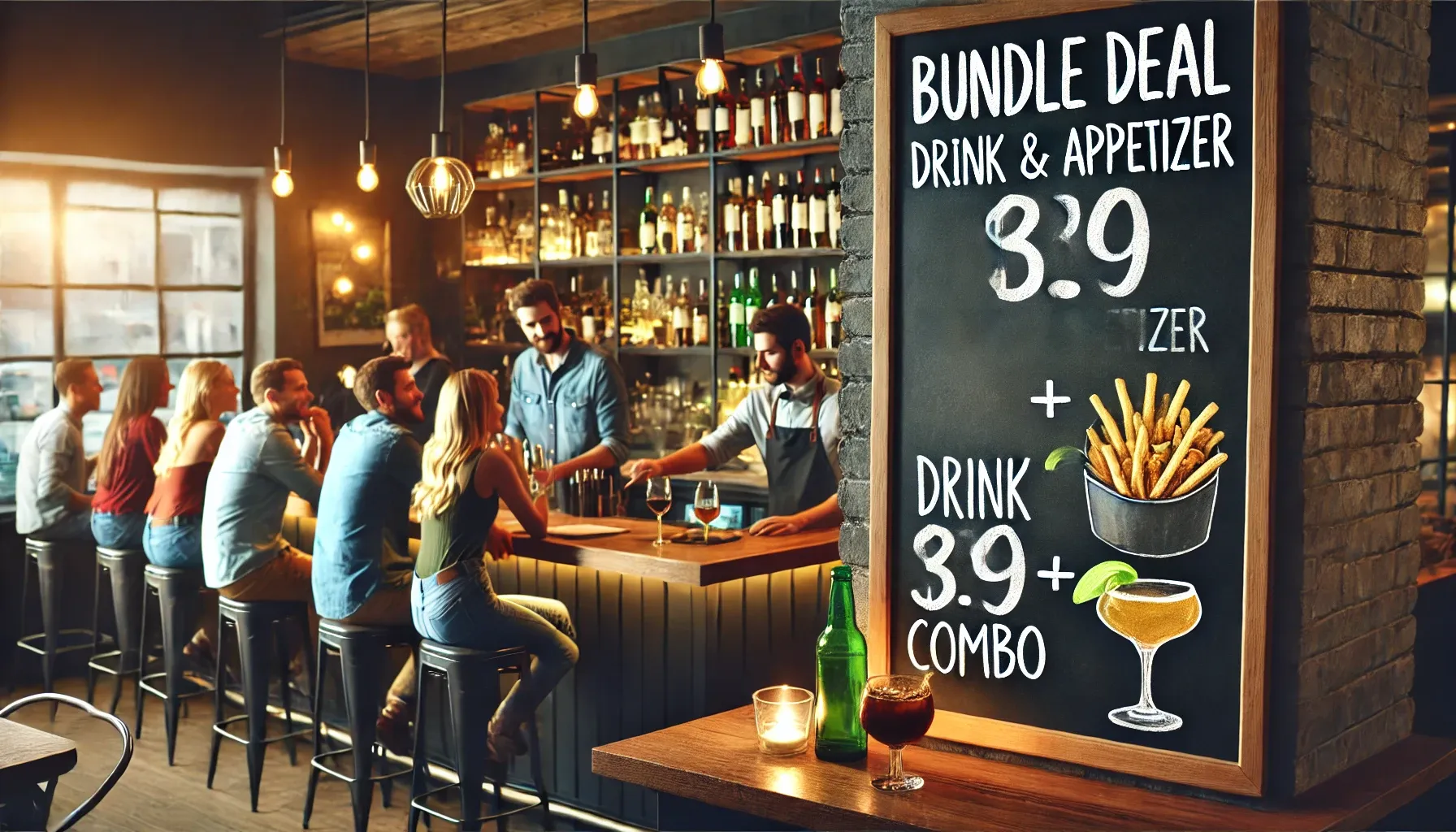
Tracking Promotion Success
Running bar promotions is only half the battle; the key to long-term success is tracking how well these promotions are performing. By measuring the effectiveness of each campaign, you can optimize your strategies, understand what works best for your audience, and make data-driven decisions that boost your bar’s revenue. Tracking the right metrics will help you refine your promotions and ultimately improve their impact.
1. Key Performance Indicators (KPIs) to Track
There are several KPIs you can use to gauge the success of your promotions. Tracking these metrics will give you valuable insights into how well your marketing efforts are translating into increased foot traffic, sales, and customer loyalty.
- Foot Traffic: Monitor the number of customers visiting your bar during promotional periods compared to non-promotional times. Increased foot traffic is a good indicator that your promotion is drawing people in.
- Sales Uplift: Compare sales during the promotion to regular days or weeks. Calculate the percentage increase in revenue during the promotional period and assess which promotions generated the most income.
- Average Transaction Value (ATV): Track the average amount each customer spends during the promotion. Promotions like bundle offers or happy hours should ideally boost the average transaction size.
- Customer Retention: If you run loyalty programs or offer repeat customer deals, track how many customers return after their first visit. Customer retention is a sign that your promotions are not only attracting new patrons but also turning them into regulars.
- Profit Margins: While increased sales are essential, it’s equally important to ensure that your promotions remain profitable. Track profit margins for each promotion by comparing revenue against the cost of discounts, event expenses, or freebies.
- Pro Tip: Create a simple spreadsheet or use bar management software to track these metrics over time, allowing you to visualize trends and make informed decisions for future promotions.
2. Customer Feedback and Satisfaction
Gathering direct feedback from your customers is crucial for understanding how they perceive your promotions and whether they are likely to return because of them. Customer feedback provides qualitative insights that metrics alone can’t offer.
- Post-Promotion Surveys: Send email surveys or distribute feedback forms after running a promotion, asking customers for their thoughts on the deals or events. You can incentivize participation with a small discount or free drink for completing the survey.
- Social Media Engagement: Track customer comments, shares, and likes on social media during your promotion. High engagement rates can indicate that customers are excited about your deals and are likely to spread the word.
- In-Person Feedback: Train your staff to ask customers how they enjoyed the promotion or event. In-person feedback can be a great way to gather informal but valuable insights directly from your patrons.
- Pro Tip: Use social listening tools to monitor online conversations about your promotions. See what customers are saying on review sites, social media, or community forums.
3. Analyzing Sales Data
Your bar’s point-of-sale (POS) system holds a wealth of data that can help you track promotion success. Analyzing sales data will give you a detailed view of which promotions generated the most sales and which menu items were most popular during specific campaigns.
- Top-Selling Items: Review which drinks or food items were ordered most frequently during the promotion. This data can help you refine future promotions by highlighting your most popular products.
- Time-Based Sales: Break down your sales data by time to see when your promotion was most effective. For example, if you run a happy hour, check if the spike in sales occurred right when it started or toward the end. This information can help you adjust the timing or duration of future promotions.
- Repeat Purchases: For loyalty programs, track how many customers made repeat purchases after redeeming a reward. This data helps you understand whether your promotions are successfully driving long-term customer loyalty.
- Pro Tip: Use a POS system that integrates with your CRM (customer relationship management) software to track individual customer purchases and loyalty points, helping you identify your most valuable customers.
4. Measuring the Return on Investment (ROI)
Tracking the ROI of your promotions is critical to understanding whether the resources you invested (time, money, discounts) are yielding a positive financial return. Here’s how you can calculate your promotion’s ROI:
- Formula for ROI:
- ROI=(Revenue from Promotion−Cost of PromotionCost of Promotion)×100\text{ROI} = \left( \frac{\text{Revenue from Promotion} - \text{Cost of Promotion}}{\text{Cost of Promotion}} \right) \times 100ROI=(Cost of PromotionRevenue from Promotion−Cost of Promotion)×100
- Cost of Promotion: Include all direct costs associated with the promotion, such as discounted items, marketing expenses (flyers, social media ads), event costs (staff overtime, entertainment), and materials used for the promotion (decor, food, or drink supplies).
- Revenue from Promotion: Calculate the total sales generated during the promotional period.
- Pro Tip: Compare the ROI of different types of promotions to see which strategies yield the best results. Focus on those with higher returns and optimize or phase out underperforming promotions.
5. Adjusting Future Promotions
The key to running successful bar promotions is continuous improvement. By reviewing your KPIs, customer feedback, and sales data, you can fine-tune future promotions to better align with customer preferences and maximize profitability.
- Refining Offers: Based on your analysis, adjust the type or amount of discounts offered. For example, if you find that bundling food with drinks consistently boosts sales, focus on offering more combo deals.
- Timing Adjustments: If you notice certain times or days perform better than others, schedule your promotions accordingly. For example, extend happy hours during busy days or offer special deals during off-peak hours.
- Experimenting with New Ideas: Don’t be afraid to test new promotion strategies based on what you’ve learned. For instance, if your customers responded well to a limited-time seasonal promotion, introduce more exclusive, time-sensitive deals.
- Pro Tip: Schedule regular reviews (monthly or quarterly) to assess how your promotions are performing and to identify trends that can help you improve future campaigns.
Tracking the success of your bar promotions allows you to see what works and what doesn’t, helping you make data-driven decisions that increase sales and customer loyalty. By analyzing key metrics, gathering customer feedback, and refining your approach, you’ll be able to continuously improve your promotional strategies for better results.
Conclusion
Bar promotions are a powerful tool for increasing foot traffic, boosting sales, and building customer loyalty. By implementing a mix of well-timed happy hours, seasonal promotions, loyalty programs, bundle offers, and strategic partnerships, you can create a vibrant and engaging atmosphere that keeps patrons coming back.
Here’s a quick recap of the key strategies discussed:
- Happy Hour Strategies: Use well-timed happy hours with enticing specials to draw in crowds during off-peak times and create a fun, social atmosphere.
- Seasonal Promotions: Leverage holidays, sporting events, and even the weather to run timely promotions that keep your offerings fresh and relevant year-round.
- Loyalty Programs: Reward regular customers with personalized perks through loyalty programs that turn casual visitors into dedicated patrons.
- Bundle Offers: Create value-driven food and drink bundles that encourage customers to spend more and explore different items on your menu.
- Partnerships: Collaborate with local businesses, artists, and event organizers to expand your reach and build a stronger community presence.
- Tracking Promotion Success: Measure the effectiveness of your promotions by tracking KPIs, gathering customer feedback, and analyzing sales data to continuously refine your strategies.
Running successful promotions is all about understanding your audience and keeping things fresh. By experimenting with different types of promotions and tracking your results, you can identify what works best for your bar and keep your customers engaged.
Next Step: Ready to take your bar marketing to the next level? Check out our guide on social media marketing strategies for bars to learn how to boost your online presence and attract even more customers.
